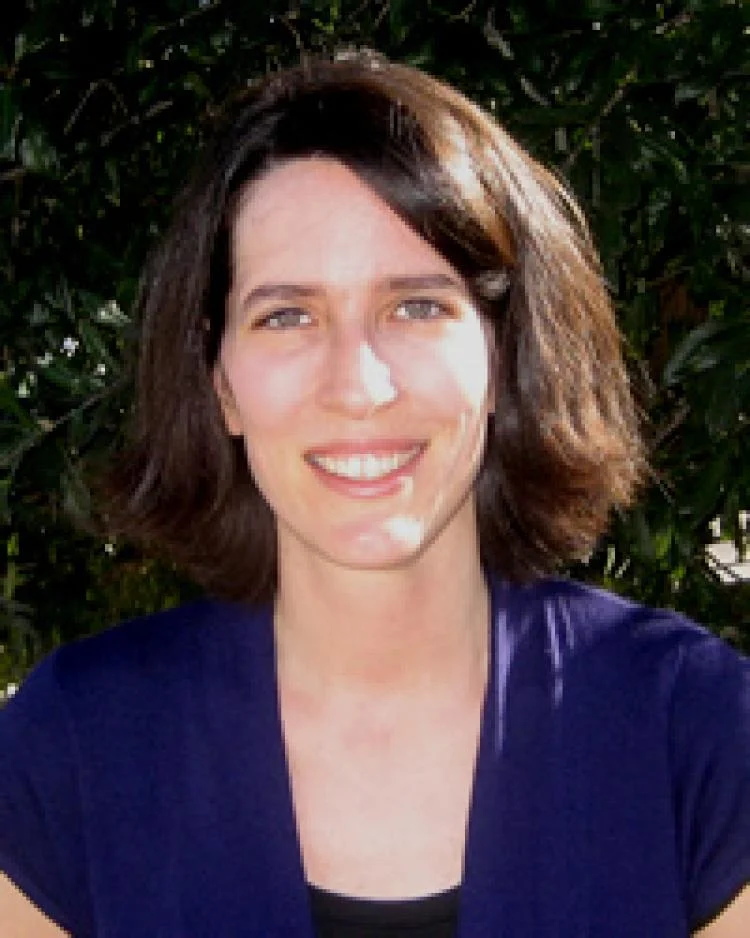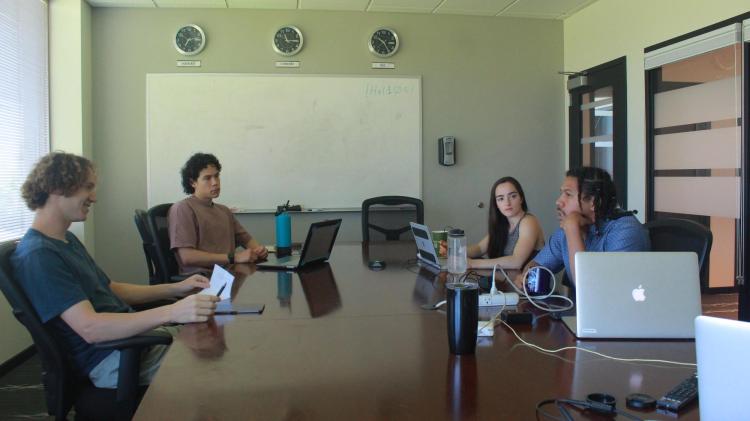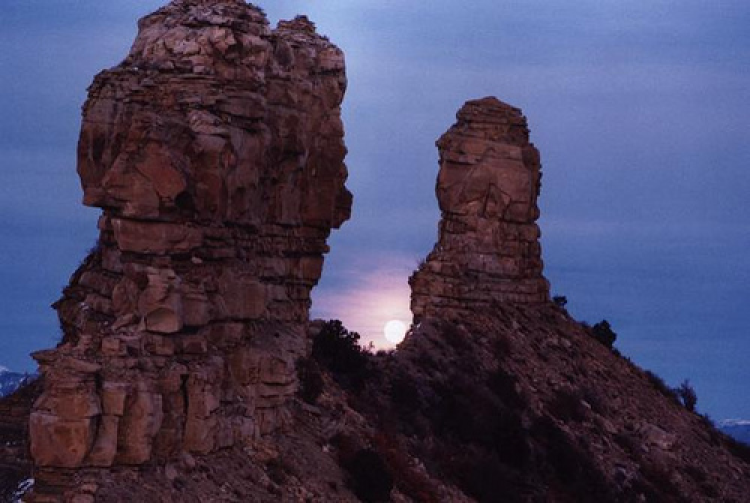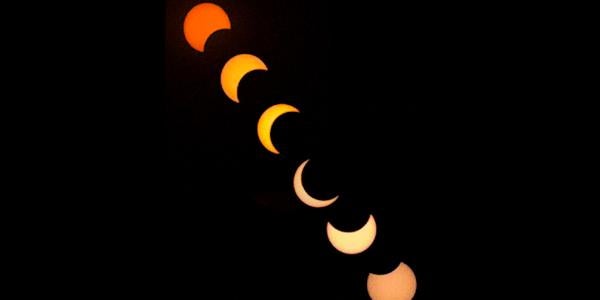Julie Comerford, associate professor of astrophysics, initiated the NSF-funded research program opening pathways to students often underrepresented in physical sciences
A new program at the University of Colorado Boulder is helping Native American undergraduate students delve into astrophysics and more fully participate in scientific research that frequently happens on Indigenous lands.
The National Science Foundation-supported program is a partnership between CU Boulder and Fort Lewis College in Durango, Colorado. Julie Comerford, associate professor of astrophysical and planetary sciences, who is leading the program, notes that Fort Lewis College does not have an astrophysics program, so students interested in the field lack opportunities.
“The intent is to open pathways to astrophysics for Native American students,” Comerford says.

Julie Comerford, associate professor of astrophysical and planetary sciences, initiated a summer research partnership between CU Boulder and Fort Lewis College to open pathways to astrophysics for Native American undergraduate students.
The American Institute of Physics reports that for every 1,000 Native American students who earn a bachelor’s degree, only four do so in physics or geosciences.
“In individual terms, an average of two Native American students earn a bachelor’s degree in astronomy each year, and fewer than one earns a Ph.D. in astronomy each year,” Comerford says. “These low numbers are especially stark for a field that builds many of its ground-based telescopes on land that’s sacred to Indigenous peoples. So even though our program is small–only three students per year–the potential impact could be massive in terms of opening pathways to astrophysics.”
Individualized research
Each student in the program is participating in a different research project with their advisor, who are CU Boulder or National Solar Observatory faculty members. The students’ projects include analyzing images from the Daniel K. Inouye Solar Telescope in Hawaii and using image data from Mars rovers and orbiters to study high-altitude noctilucent clouds—research inspired by the student’s experience during childhood of seeing a sunlit cloud in the sky at night. Program participants also are exploring qualities of planets beyond our solar system.
In addition, the students are taking part in professional development workshops hosted by the Boulder Solar Alliance Research Experience for Undergraduates, part of the CU Boulder Laboratory for Atmospheric and Space Physics. The workshops include how to give a brief description of their research projects, how to write scientific abstracts, how to make a research poster and how to apply to graduate school. The students also get mentoring from CU Boulder graduate students.

Astrophysics program interns and mentors—including (left to right around the table) intern Yoshi Levey, mentor and CU graduate student Charles (Charlie) Marrder, mentor and CU graduate student Anna Zuckerman and mentor and CU graduate student Marcel Corchado-Albelo—attend a professional development workshop at the Laboratory for Atmospheric and Space Physics/National Solar Observatory in Boulder.
The idea for the program came to Comerford when she saw an NSF solicitation for its Partnerships in Astronomy & Astrophysics Research and Education (PAARE) program, which works to improve astronomy and astrophysics research and education.
“I thought it sounded really interesting and worthwhile,” Comerford says.
Statewide partnership
As Comerford was thinking about what institution to partner with, her department chair, Nils Halverson, mentioned the CU Boulder-Fort Lewis partnership the CU@FLC Postdoctoral Teaching Fellowship Program, started by former Associate Dean for Research Theresa D. Hernández and James White, former acting dean for the CU Boulder College of Arts and Sciences.
“I reached out to Theresa to learn more and came out of that conversation thinking that Fort Lewis College would be an amazing partner.” Comerford says. “I owe a lot to Nils and Theresa for encouraging me and helping me get my PAARE proposal off the ground. I wrote the proposal in January 2022, so it's been 18 months to get from the proposal to this first cohort of students.”
Hernandez says Comerford's partnership with Fort Lewis College creates an amazing opportunity to engage undergraduates in astrophysics and to increase the recruitment, retention and successes of groups often underrepresented in that field.
“This program also rounds out CU’s and Fort Lewis College’s Post-Doctoral Teaching Fellowship Program,” Hernandez says. “Together, these create a strong foundation for regular interaction between both campuses and for students through their undergraduate, graduate and post-doctoral studies. We’re thrilled that the first group of students have started, and by Dr. Comerford’s strong commitment to this important work in her field.”

In summer 2025, alumni from the astrophysics program will gather at Chimney Rock National Monument in southwest Colorado for the lunar standstill, during which the full moon rises between two rock formations as viewed from an ancestral Puebloan ceremonial site.
Andy Cowell, faculty director of the Center for Native American and Indigenous Studies (CNAIS) at CU Boulder, says CNAIS is excited to support Comerford’s project. “We’ve been working recently to expand our cooperative work with natural sciences departments. We want to help promote not just Native and Indigenous Studies as an academic discipline, but also Native communities in all academic areas across the campus, and this project is a good example of how that can be done.”
Comerford says she has funds to run the program for three summers. After the third summer, she plans to gather all program alumni at Chimney Rock National Monument in southwest Colorado for the 2025 lunar standstill, during which the full moon rises between two rock formations as viewed from an ancestral Puebloan ceremonial site.
“I want to use these first three years to establish the program, and then grow it into a longstanding, established program with institutional support from CU Boulder,” Comerford says, adding that she thinks of the NSF funding as a seed grant. “The goal is for this to become an embedded program that continues decades from now.”
Did you enjoy this article? Subcribe to our newsletter.



